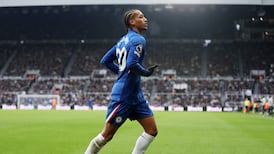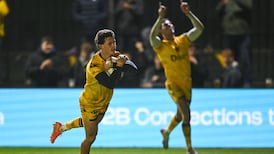COACHES' CORNER GYM TRAINING:Coaching experts JIM KILTYand LIAM HENNESSYgive some guidelines to help get the best from gym-based training
WE HAVE previously written that strength can be developed without going to the gym. In fact great levels of strength and power can be honed on the playing pitch or in the sportshall.
However, many young players will inevitably see the gym as the main area where strength and muscle mass is developed.
Before starting the player should prepare themselves by ensuring that they have a sensible nutritional plan in place, have had a functional screen and are guided by a qualified strength coach. Here are some guidelines to help get the best from gym-based training.
1. Seek the advice of a qualified strength coach. This is perhaps the most important factor in ensuring that strength progression is ensured.
2. Avoid supplements – they are expensive and potentially harmful. In fact recent evidence has convincingly shown that milk is just as effective at optimising recovery from strength training and providing all the nutrients and energy needed immediately post-training compared to the often dubious muscle-building supplements promoted in magazines and on websites. In fact our advice to all school-going players is to avoid all forms of supplements.
Eating well at breakfast, lunch and dinner every day and at a regular time will ensure that you have all the nutrients and energy needed to make serious gains in the gym. Adding some fruit or natural foods such as a banana or bowl of cereal is an excellent post-training power snack.
3. Start by learning the techniques of key exercises. This is a very important point and relates to having a qualified strength coach. A qualified strength coach will firstly screen the player using basic functional movements such as the squat, lunge and step exercises. From this imbalances and movement limitations can be identified and ideally corrective exercises can then be started. The key exercises such as the squat and lunge and press-up are excellent at developing a base of strength.
However, before loading up on the weight lifted, in particular in the squat, the player should be screened so as to identify his or her imbalances and restrictions in movement.
4. Keep your sessions in the gym short. Many players starting out tend to spend too long in the gym. A well-planned and productive training session in the gym should take no longer that 45 minutes at maximum.
5. Do not copy a top player’s strength programme. This is a common mistake especially for young school boy players who hear of the exercises, sets and repetitions and loads used by perhaps well trained players.
6. Take between two-three days recovery between strength training sessions. In fact two training units a week for the young player will yield great gains.
Strength training any more than three times a week is not necessary.
Will strength training blunt speed? The notion that strength training blunts speed is false.










